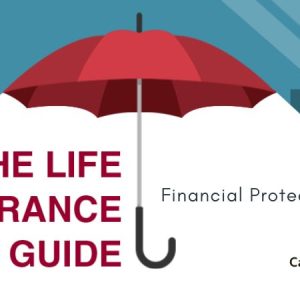Introduction

When it comes to protecting our vehicles, car insurance plays a vital role in providing financial security and peace of mind. However, as our circumstances change or we discover better options, we may find ourselves asking, “can i switch car insurance anytime?” Luckily, the flexibility of switching car insurance allows us to explore better coverage, lower premiums, and improved customer service. In this article, we will delve into the importance of car insurance and understand the possibilities that come with switching.
Importance of Car Insurance
Car insurance is not just a legal requirement in most jurisdictions; it is an essential safeguard for both you and your vehicle. Accidents happen, and having the right insurance coverage can protect you from substantial financial losses. Whether it’s covering medical expenses, property damage, or legal liabilities, car insurance provides a safety net that ensures you won’t be left stranded in the face of unforeseen circumstances.
Understanding the Flexibility of Switching Car Insurance
Now, let’s address the burning question: can you switch car insurance anytime? The good news is that, in most cases, the answer is yes! Unlike certain contracts that bind you for a fixed term, car insurance policies often offer the flexibility to switch providers whenever you feel the need. This means that you have the freedom to explore other options that may better suit your changing needs or preferences.
Switching car insurance comes with various benefits that can significantly impact your coverage and financial well-being. From cost savings to better customer service, the advantages of switching are worth considering. In the next sections, we will discuss the factors to consider before making the switch, the process of switching car insurance, timing considerations, and the potential benefits that await you.
So, if you’ve been pondering whether you can switch car insurance anytime, let’s embark on this journey together and unlock the possibilities that lie ahead. Remember, your car insurance should always work for you, not the other way around. It’s time to take control and make informed decisions about your coverage. Let’s dive in!
Factors to Consider Before Switching Car Insurance
Switching car insurance is a decision that should not be taken lightly. Before making the leap, it’s crucial to evaluate your current car insurance policy and identify the reasons that are driving you to switch. By considering these factors, you can make an informed decision that aligns with your needs and preferences.
Evaluating your Current Car Insurance Policy
The first step in the switching process is to thoroughly evaluate your current car insurance policy. Take a closer look at the following aspects:
1. Coverage Types and Limits
Review the coverage types and limits provided by your current policy. Are they sufficient to protect you and your vehicle in case of an accident? Consider factors such as liability coverage, collision coverage, comprehensive coverage, and uninsured/underinsured motorist coverage. Assess whether your current policy adequately meets your needs or if additional coverage is required.
2. Deductibles and Premiums
Examine the deductibles and premiums associated with your current policy. Deductibles are the out-of-pocket expenses you have to pay before your insurance coverage kicks in, while premiums are the regular payments you make to maintain coverage. Evaluate whether these costs align with your budget and financial capabilities. If you find them to be too high or unaffordable, it may be a strong indicator that it’s time to switch car insurance.
3. Additional Benefits and Discounts
Consider any additional benefits or discounts offered by your current car insurance provider. These could include perks like roadside assistance, rental car coverage, or discounts for safe driving records. Assess whether your current policy offers these benefits and if they are valuable to you. If you find that other insurers provide better options or discounts that suit your needs, it may be worth exploring your alternatives.
Identifying Reasons for Switching Car Insurance
To make an informed decision about switching car insurance, it’s important to identify the reasons behind your desire to switch. Some common reasons include:
1. Unsatisfactory Customer Service
If you’ve experienced subpar customer service from your current insurance provider, it can be a strong motivation to switch. Prompt and reliable customer service is crucial, especially when you need assistance with claims or have questions about your policy. Evaluate whether your current insurer meets your expectations in this regard.
2. Unaffordable Premiums
If the premiums you’re paying for your car insurance have become a burden on your finances, it may be time to explore more affordable options. Switching car insurance can provide an opportunity to find competitive rates that better suit your budget.
3. Better Coverage Options
Perhaps you’ve discovered that other insurance providers offer more comprehensive or tailored coverage options that align with your specific needs. Take the time to research and compare different policies to determine if there are better coverage options available to you.
4. Relocation or Change in Circumstances
Relocating to a new area or experiencing significant changes in your driving habits or circumstances may require a policy adjustment. Different regions may have varying insurance requirements, and your current policy may no longer be the best fit for your situation. Assess whether your current policy aligns with your new circumstances or if switching would be a more suitable option.
By thoroughly evaluating your current car insurance policy and identifying your reasons for switching, you can make an informed decision that ensures your coverage meets your evolving needs. In the next section, we will explore the process of switching car insurance and how to navigate the transition smoothly.
Understanding the Process of Switching Car Insurance
Switching car insurance may seem like a daunting task, but with a clear understanding of the process, it becomes much more manageable. In this section, we will break down the steps involved in switching car insurance to help you navigate the process smoothly.
Researching and Comparing Different Insurance Providers
The first step in switching car insurance is to research and compare different insurance providers. Take the time to explore the options available to you, considering factors such as coverage types, premium rates, customer reviews, and reputation. Look for insurance companies that align with your needs and priorities, whether it be affordable premiums, excellent customer service, or additional benefits that suit your lifestyle.
Obtaining Quotes from Multiple Insurers
Once you have narrowed down your choices, it’s time to obtain quotes from multiple insurers. Reach out to the selected providers and provide them with the necessary information to receive accurate quotes. Be sure to include details such as your driving history, the make and model of your vehicle, and any additional coverage options you may require. Comparing quotes allows you to assess the cost and coverage offered by each insurer, helping you make an informed decision.
Analyzing the New Policy Terms and Conditions
Before committing to a new car insurance policy, carefully analyze the terms and conditions. Pay close attention to coverage limits, deductibles, exclusions, and any additional provisions specific to your needs. Understanding the details of the policy ensures that you are aware of what is covered and what is not, preventing any surprises in the event of an accident or claim.
Cancelling Your Existing Car Insurance Policy
Once you have selected a new car insurance policy, it’s time to cancel your existing one. Start by reviewing the cancellation policies and potential penalties associated with your current insurer. Some companies may charge a cancellation fee or require a specific notice period. Ensure you follow the proper procedures and provide adequate notice to your current insurer to avoid any unnecessary charges or complications.
1. Reviewing Cancellation Policies and Penalties
Review your current car insurance policy to understand the cancellation policies and penalties that may apply. Familiarize yourself with any contractual obligations or fees that could impact your decision to switch.
2. Providing Proper Notice to Your Current Insurer
When switching car insurance, it’s crucial to provide proper notice to your current insurer. This can usually be done by contacting them directly or submitting a written request. Follow their instructions to ensure a smooth transition and avoid any gaps in coverage.
By understanding and following these steps, you can navigate the process of switching car insurance seamlessly. Remember, taking the time to research, compare, and analyze policies will help you find the best coverage at the most competitive rates. So, let’s move forward and explore the timing considerations for switching car insurance.
Timing Considerations for Switching Car Insurance
Switching car insurance is an exciting prospect, but before taking the leap, it’s crucial to consider the timing of your switch. This will help you navigate the process smoothly and avoid any potential pitfalls. Let’s explore some key timing considerations to keep in mind when switching car insurance.
Mid-term vs. Renewal Period Switches
When contemplating a switch, you have two options regarding the timing: mid-term or during your policy’s renewal period. Both approaches have their merits, and choosing the right one depends on your specific circumstances.
Mid-term Switches
Switching car insurance mid-term means changing providers before your current policy expires. This can be advantageous if you’ve found a better deal or improved coverage options. However, it’s important to be aware of potential penalties or fees for canceling your existing policy prematurely. Make sure to review your policy documents and contact your current insurer to understand the terms and conditions surrounding mid-term switches.
Renewal Period Switches
Alternatively, you may opt to switch car insurance during your policy’s renewal period. This typically occurs annually, providing an ideal opportunity to reassess your coverage needs and explore other options. By switching at this time, you can seamlessly transition from one policy to another without worrying about cancellation penalties or coverage gaps. Keep in mind that it’s still crucial to compare quotes and policies from different insurers to ensure you’re getting the best possible coverage and price.
Avoiding Coverage Gaps during the Transition
One of the most critical aspects of switching car insurance is avoiding coverage gaps during the transition. A coverage gap refers to the period when you are not protected by any insurance. It’s essential to minimize this gap to ensure continuous protection for yourself and your vehicle.
To avoid coverage gaps, coordinate the start date of your new policy with the cancellation date of your old one. This way, you seamlessly transition from one policy to another without any lapses in coverage. Additionally, make sure to promptly submit all required documentation and payments to your new insurer to ensure a smooth and uninterrupted transition.
Considering Potential Penalties or Fees
Before switching car insurance, it’s essential to consider any potential penalties or fees associated with canceling your current policy. Some insurers may charge a cancellation fee or impose penalties based on the remaining term of your policy. Understanding these costs will help you make an informed decision and assess whether the potential savings from switching outweigh the expenses incurred.
When contemplating a switch, carefully review the terms and conditions of your current policy and consult with your insurer to gain clarity on any potential penalties or fees. By being aware of these factors, you can make a well-informed decision and avoid any unexpected financial burdens.
By considering the timing of your switch, avoiding coverage gaps, and understanding potential penalties, you can navigate the process of switching car insurance smoothly. In the next section, we will explore the potential benefits that await you when you decide to make the switch.
Potential Benefits of Switching Car Insurance
Switching car insurance not only provides the opportunity to explore new options but also brings potential benefits that can enhance your coverage and financial well-being.
Cost Savings through Lower Premiums
One of the significant advantages of switching car insurance is the potential for cost savings. As insurance providers compete for business, they often offer attractive rates to entice new customers. By taking advantage of these lower premiums, you can potentially reduce your monthly expenses and put some extra money back in your pocket.
Taking Advantage of New Customer Discounts
When switching car insurance, keep an eye out for enticing new customer discounts. Many insurance companies offer special promotions to attract fresh clients, providing an excellent opportunity for savings. These discounts can vary, ranging from reduced rates for the first year to additional perks like waived deductibles. Don’t miss out on these potential savings when making the switch.
Comparing Rates to Find the Best Deal
Switching car insurance allows you to compare rates from different providers, ensuring you find the best deal available. By obtaining quotes from multiple insurers, you can evaluate the cost of coverage and identify the most affordable option that meets your needs. Remember, it’s not just about finding the cheapest policy, but also considering the value and coverage provided.
Access to Better Coverage and Benefits
Aside from potential cost savings, switching car insurance can also grant you access to better coverage and additional benefits that your current policy may not offer.
Exploring Additional Add-ons and Options
When you switch car insurance, take the opportunity to explore additional add-ons and options that can enhance your coverage. These could include roadside assistance, rental car reimbursement, or even gap insurance. By customizing your policy to suit your specific needs, you can ensure comprehensive protection on the road.
Improving Claim Handling and Customer Service
Unsatisfactory customer service can be a frustrating experience when dealing with car insurance. Switching providers allows you to seek out insurers with a reputation for excellent customer service and efficient claim handling. By prioritizing exceptional service, you can enjoy a smoother claims process and peace of mind knowing that your insurer has your back when you need them most.
Switching car insurance presents a unique opportunity to reap the benefits of lower premiums, improved coverage, and superior customer service. Don’t hesitate to explore your options and make the switch that could positively impact your financial well-being and overall satisfaction with your car insurance.
Conclusion
In conclusion, the ability to switch car insurance anytime provides us with the power to take charge of our coverage and ensure it aligns with our evolving needs. Car insurance is a crucial aspect of protecting our vehicles and ourselves from unexpected events. By understanding the importance of car insurance and the flexibility that comes with switching, we can make informed decisions to secure the best coverage and benefits.
Throughout this article, we have explored the factors to consider before switching car insurance, the process of switching, timing considerations, and the potential benefits that await those who take the leap. We have learned that evaluating our current policy, researching and comparing providers, and analyzing the terms and conditions are essential steps in the switching process.
Switching car insurance may offer cost savings through lower premiums and access to better coverage and benefits. By taking advantage of new customer discounts and comparing rates, we can potentially reduce our insurance expenses. Additionally, exploring additional add-ons and options can enhance our coverage, while improved customer service and claim handling can provide a smoother experience.
When it comes to making the switch, it is crucial to consider timing and avoid coverage gaps to ensure continuous protection. Understanding cancellation policies and providing proper notice to your current insurer will help navigate the transition seamlessly, without incurring penalties or fees.
So, if you find yourself wondering, “Can I switch car insurance anytime?” remember that the answer is usually yes. Take the time to evaluate your current policy and research available options. Don’t settle for less than what you deserve. Choose a car insurance policy that aligns with your needs, preferences, and budget.
As you embark on your car insurance journey, remember that knowledge is power. Stay informed, compare quotes, and don’t hesitate to ask questions. With the ability to switch car insurance anytime, you have the freedom to prioritize protection and peace of mind. Make the move and drive confidently into the future with the right car insurance coverage for you.





